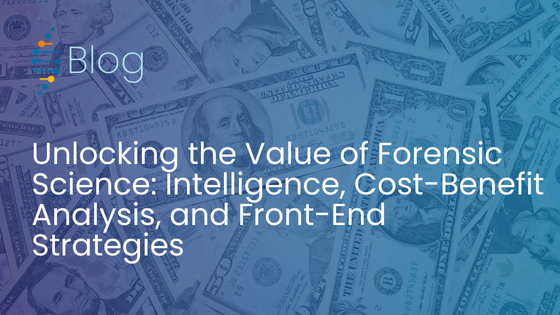This article was generated with the assistance of artificial intelligence. However, all content has been thoroughly reviewed and curated by a human editor before posting to guarantee accuracy, relevance, and quality.
Forensic science has long been a cornerstone of the justice system, providing critical evidence for convicting the guilty and exonerating the innocent. However, as crime laboratories face increasing demands and limited resources, the question of how to maximize the value of forensic science has become more pressing. Traditionally, forensic science has been viewed as a reactive process—primarily used for confirming the presence of evidence at the end of an investigation. But recent research, as highlighted by Paul J. Speaker in Intelligence and the Value of Forensic Science, argues for a shift toward using forensic intelligence at the front end of investigations. This strategic shift promises not only better outcomes in criminal justice but also significant cost savings and public health benefits through crime prevention.

Forensic Intelligence: A Strategic Shift
The concept of forensic intelligence emphasizes the use of forensic science not just as a tool for confirming a case, but as a proactive resource that can guide investigations, identify crime patterns, and ultimately prevent future crimes. Recent studies, such as those highlighted by Speaker, point to the untapped potential of forensic intelligence. By analyzing big datasets in real-time and integrating data from multiple sources—such as DNA databases, ballistics (NIBIN), and fingerprint databases (AFIS)—crime laboratories can provide investigators with actionable leads early in the investigative process.
Forensic intelligence also expands the value of forensic science beyond its traditional role in obtaining convictions. As Speaker notes, the societal benefits of forensic intelligence include enhanced public health and safety, as well as the protection of the innocent. These broader outcomes underscore the importance of viewing forensic science as a dynamic and integral component of law enforcement.
The Economic Problem: Measuring the Value of Forensic Science
One of the key challenges facing crime laboratories is how to allocate their limited resources efficiently while meeting the ever-growing demand for forensic analysis. This is where projects like FORESIGHT, an initiative that enables forensic laboratories to benchmark their performance and make data-driven decisions, come into play. FORESIGHT allows laboratories to monitor key performance indicators, such as productivity, turnaround times, and backlogs, and to compare their operations with other labs.
From an economic perspective, the value of forensic science can be measured not just by its role in solving crimes, but by the broader societal benefits it offers. For example, in cases involving sexual assault kits (SAKs), testing backlogged kits has been shown to prevent future crimes by identifying serial offenders. According to Speaker, testing all previously unsubmitted SAKs provided a return on investment (ROI) of USD 81 for every dollar spent, and testing new SAKs as they are collected yields an ROI as high as USD 646 per dollar.
In addition to the direct benefits of solving crimes and preventing future offenses, forensic science also reduces the costs associated with wrongful convictions, public health threats, and prolonged investigations. The challenge for crime laboratories is to maximize these returns by adopting strategic front-end forensic intelligence approaches.
Front-End Forensics in Action
The value of forensic intelligence is not just theoretical—it has already been put into practice in several forward-thinking jurisdictions. From Arkansas to Houston, crime laboratories are integrating forensic intelligence into their workflows, with impressive results.
Arkansas
The Arkansas State Crime Laboratory implemented a real-time dashboard to monitor key performance metrics, such as productivity and turnaround times. This dashboard, created as part of the FORESIGHT 20/20 project, enables the laboratory to adjust resources dynamically and respond quickly to changing demands. By adopting Lean Six Sigma practices, the laboratory has not only improved efficiency but also tackled a 5000-case backlog of untested sexual assault kits. This initiative demonstrates how real-time forensic intelligence can be used to optimize resources and achieve significant improvements in public safety.
Houston Forensic Science Center (HFSC)
The HFSC has been a leader in the use of forensic intelligence to address public health and safety issues. By monitoring local trends in drug use—such as a rise in phencyclidine (PCP) cases in impaired driving investigations—HFSC has provided valuable insights to law enforcement and public health officials. This proactive approach has broadened the role of forensic science beyond criminal convictions to include prevention strategies for substance abuse and impaired driving. HFSC’s experience shows that the value of forensic science can extend well beyond the courtroom.
Miami-Dade
In Miami-Dade, the Forensic Services Bureau has embraced front-end forensics by creating an intelligence analyst (IA) position that serves as a bridge between the crime lab and investigators. This analyst taps into forensic databases, including CODIS and NIBIN, to provide investigators with leads based on forensic evidence. The results have been impressive: a conservative estimate of ROI for this front-end forensic intelligence model is USD 48 for every dollar spent. The success of this initiative has led to the expansion of the IA program, with new hires focused on cold cases and forensic investigative genetic genealogy.
Phoenix Crime Gun Intelligence Center (CGIC)
The Phoenix Police Department’s CGIC has demonstrated how front-end forensics can improve the efficiency of gun crime investigations. By prioritizing the input of ballistics data into NIBIN within 24–48 hours, the CGIC has dramatically increased the number of leads available to investigators. This approach has led to a 163% increase in NIBIN leads and improved clearance rates for gun-related crimes. The Phoenix model highlights how shifting forensic analysis to the front end of investigations can yield faster results and more effective law enforcement.
The Importance of Measuring ROI and Success Metrics
As forensic laboratories adopt more proactive forensic intelligence strategies, it is essential that they measure the success of these initiatives through robust ROI analyses and cost-benefit studies. One of the key takeaways from Speaker’s review is that the value of forensic science should not be limited to convictions alone. The broader societal benefits—such as crime prevention, public safety, and the exoneration of the innocent—must also be considered.
To accurately assess the value of forensic science, laboratories need to collect and analyze data on all aspects of their operations, from the cost of processing a single case to the societal costs avoided through crime prevention. Initiatives like FORESIGHT offer a framework for doing just that, allowing laboratories to benchmark their performance and make informed decisions about where to allocate their resources.
Conclusion
Forensic science is poised to play an even greater role in the future of criminal justice, not just by solving crimes but by preventing them. The shift toward forensic intelligence, as outlined by Speaker, is a strategic move that offers significant cost savings, improved public safety, and broader societal benefits. By adopting front-end forensic strategies, crime laboratories can maximize their impact, reduce backlogs, and provide actionable intelligence to law enforcement in real time.
However, to fully realize the value of forensic science, laboratories must continue to measure the return on investment for each initiative and refine their processes based on data-driven insights. As forensic intelligence becomes more integrated into the justice system, the contributions of forensic science will extend far beyond the courtroom, reshaping how we think about crime prevention and public safety.
Citations
Speaker, P.J. (2024). Intelligence and the Value of Forensic Science. Forensic Sci., 4, 184-200. https://doi.org/10.3390/forensicsci4010011

